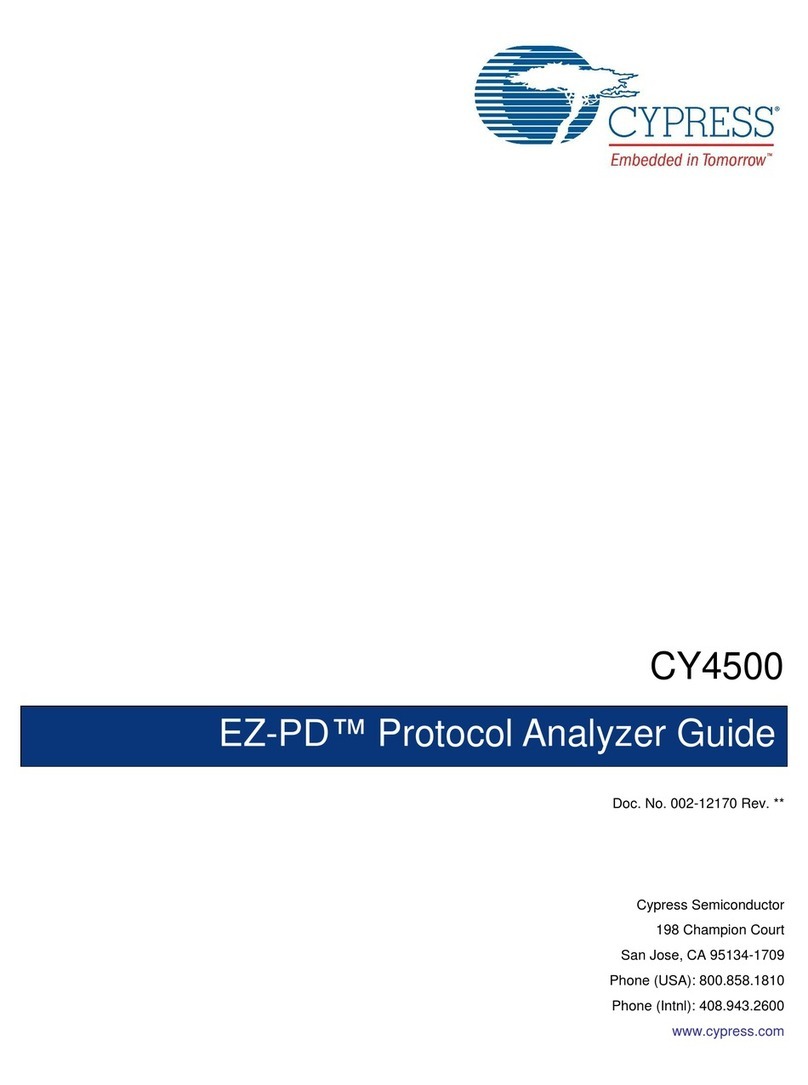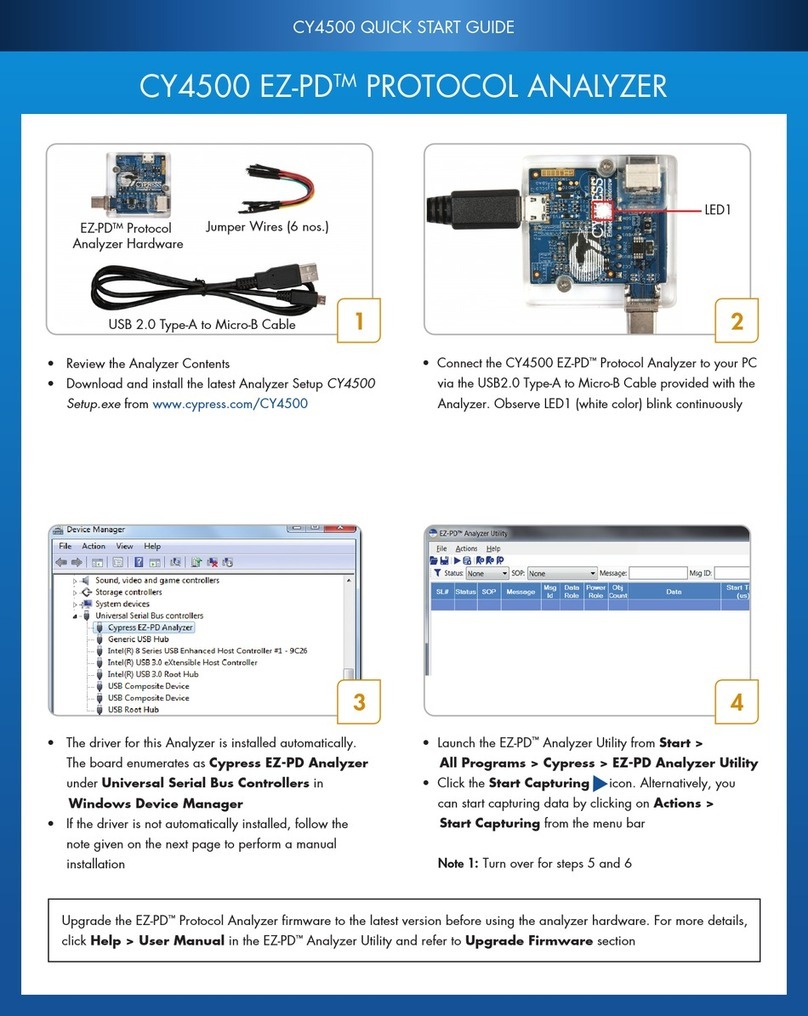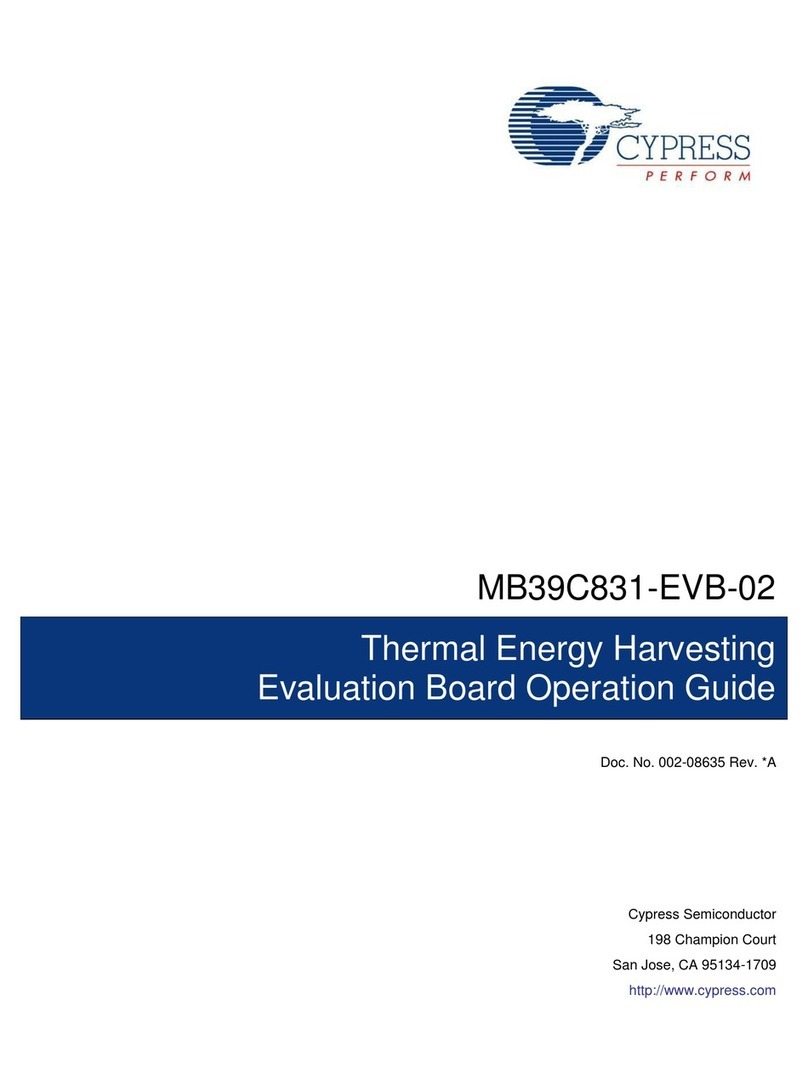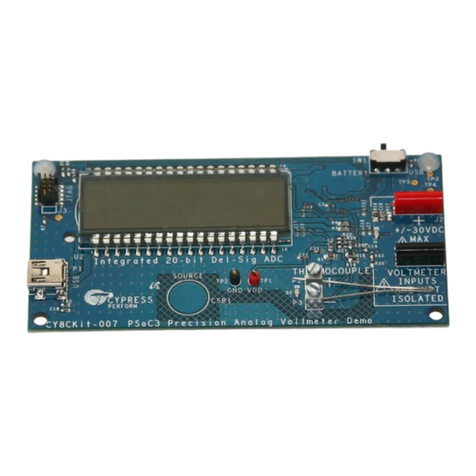
www.cypress.com Document No. 002-14934 Rev. *C 1
Contents
1 Introduction ................................................................ 1
1.1 Cypress Part Numbering Scheme..................... 1
1.2 Acronyms and Abbreviations............................. 2
1.3 References ........................................................ 2
2 IoT Resources............................................................ 2
3 Overview .................................................................... 2
4 Comparing Bluetooth Low Energy to
Bluetooth 2.x/3.x......................................................... 2
5 Test Setup.................................................................. 3
5.1 System Requirements ....................................... 3
5.2 Test Equipment Settings....................................4
5.3 Daughterboard Settings .....................................5
5.4 BCM9UMB Bluetooth/WLAN Motherboard
Settings.............................................................. 7
5.5 Loading the Configuration File .........................10
6 Current Consumption Measurements.......................13
6.1 Advertising Mode .............................................13
6.2 Scan Mode.......................................................18
Document History Page ...................................................22
Worldwide Sales and Design Support ..............................23
1 Introduction
The CYW4330 implements the industry's most advanced radio coexistence algorithms and hardware mechanisms
to allow an extremely collaborative WLAN and Bluetooth coexistence scheme, along with coexistence support for
external radios (such as GPS and WiMAX). The result is an enhanced overall quality for simultaneous voice,
video, and data transmission on a handheld system.
This application note provides an introduction to the Bluetooth Low Energy (BLE) technology, and describes the
setup and procedures to measure the basic current consumption in two of the most common BLE modes (adver-
tising and scan mode).
This application note is intended for hardware engineers and designers who are using the CYW4330 device in
their design.
This document assumes that a user knows how to download firmware to the CYW4330 device. If the CYW4330
device has already been integrated onto a platform, the proper configuration files need to be loaded and the
proper commands for BLE are generated by the host processor. If an evaluation board is being used, this can be
accomplished by using Cypress’s proprietary BlueTool™ software. Contact your local Cypress technical represen-
tative for BlueTool support.
1.1 Cypress Part Numbering Scheme
Cypress is converting the acquired IoT part numbers from Broadcom to the Cypress part numbering scheme. Due
to this conversion, there is no change in form, fit, or function as a result of offering the device with Cypress part
number marking. The table provides Cypress ordering part number that matches an existing IoT part number.
Table 1. Mapping Table for Part Number between Broadcom and Cypress
AN214934
Bluetooth Low Energy Current Consumption Measurements
Associated Part Family: CYW4330
This application note provides an introduction to the Bluetooth Low Energy (BLE) technology, and describes the setup and
procedures to measure the basic current consumption in two of the most common BLE modes (advertising and scan mode).
This application note is intended for hardware engineers and designers who are using the CYW4330 device in their design.
Broadcom Part Number Cypress Part Number
BCM4330 CYW4330
































